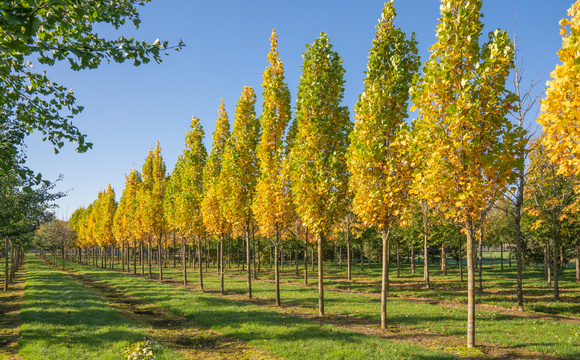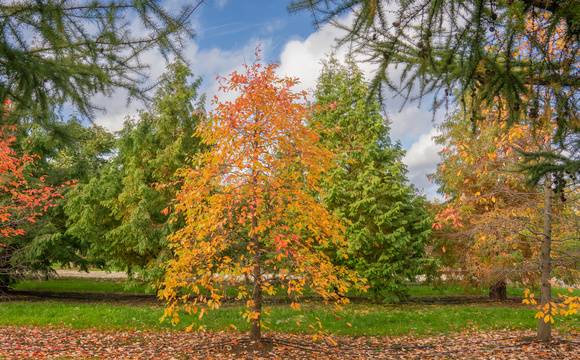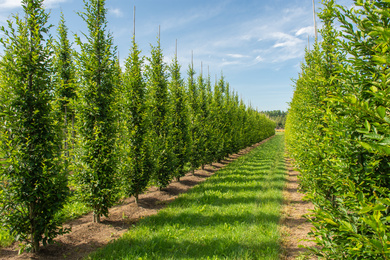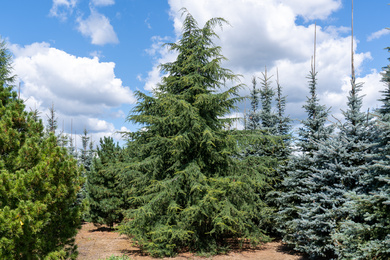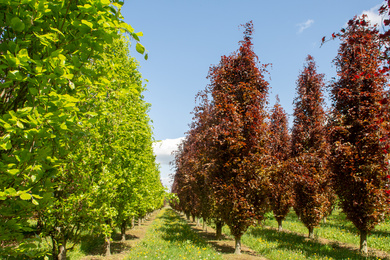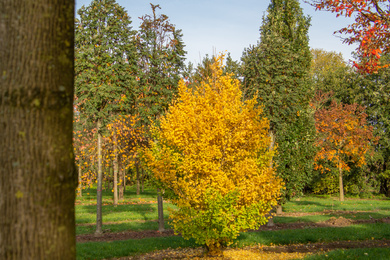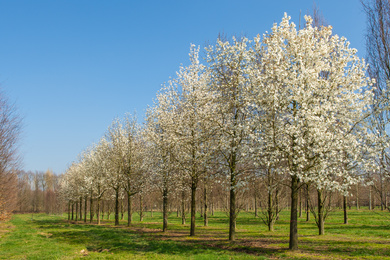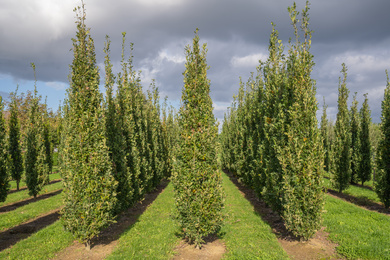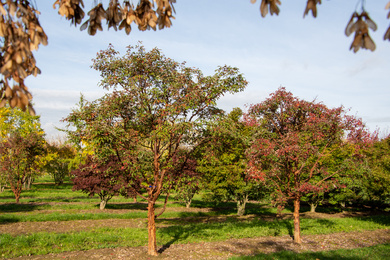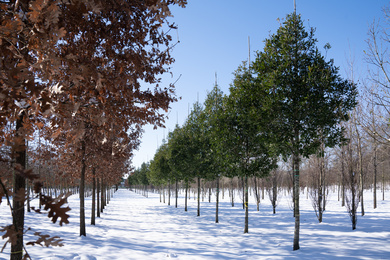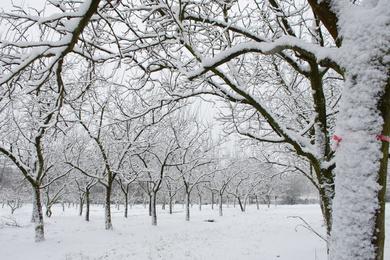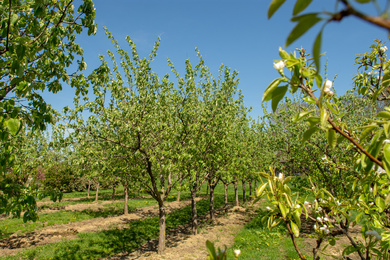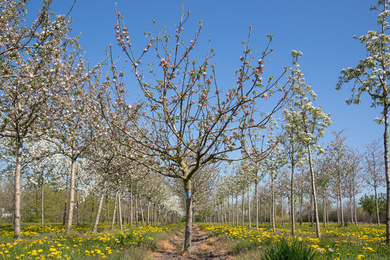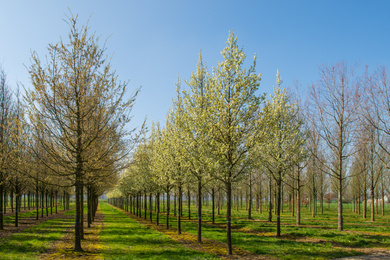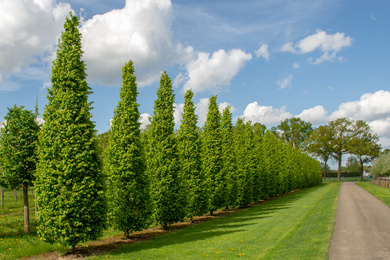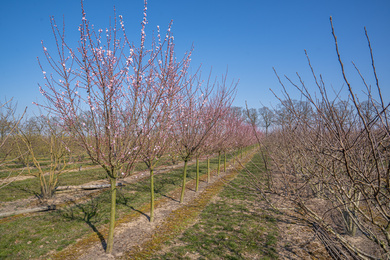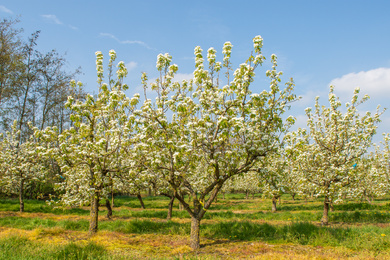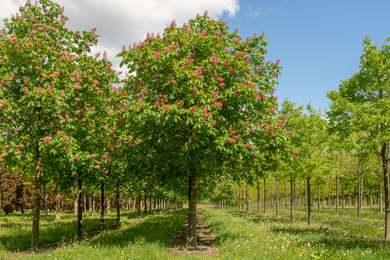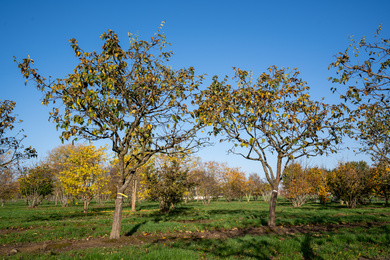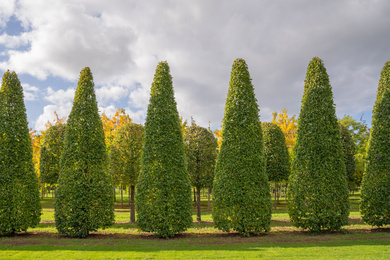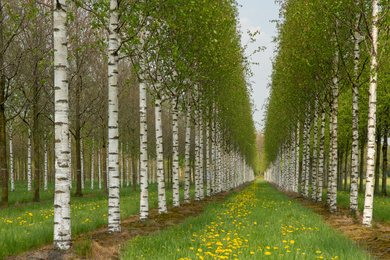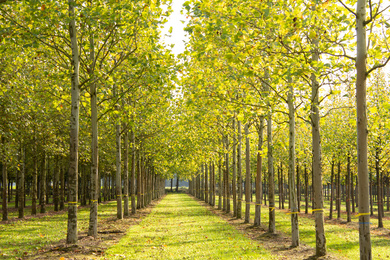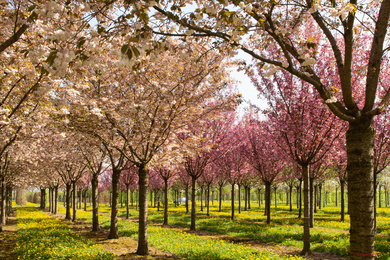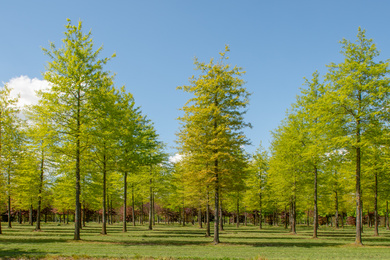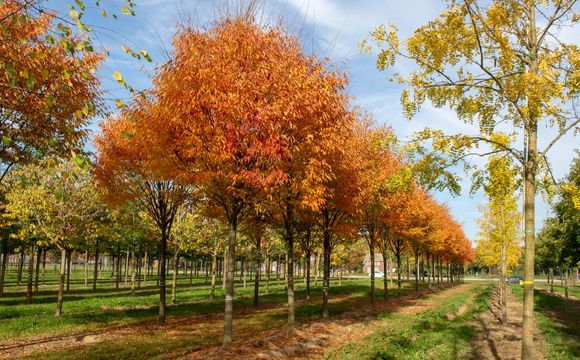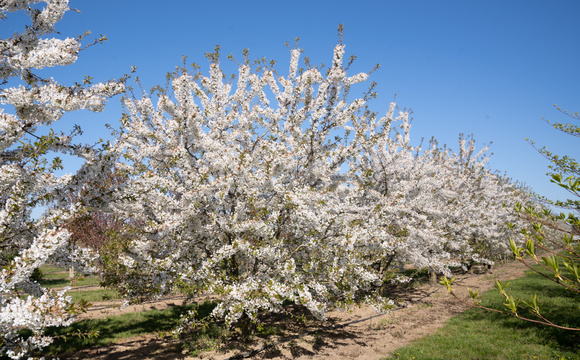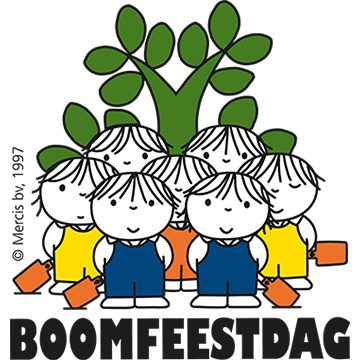So many projects, so many trees! Trees are grown for many applications. For private gardens, greenery in public spaces, in towns and cities, on a roof or along a busy road, you will find trees everywhere. Getting inspiration for choosing varieties in your planting plan? At our nursery we are happy to examine with you which trees can enhance your green project. Our advisers will share ideas with you regarding the right tree in the right place and are happy to illustrate a wide range of varieties and sizes.
TreeEbb trees search tool
Find the right tree in the TreeEbb
Go to the TreeEbbCharacteristic trees
Characteristic trees are grown and selected for character and growing shape. We select trees with ornamental or simply unpredictable growing shapes intended as accent planting in your design. These are outstanding for use as an eye-catcher in your design. Often they are planted as solitary trees to show off their character to the full. However, we also grow, for example, multi-stem parasol-shaped trees or trees for sitting. These are trees with a U-shaped stem, meaning that the stem is horizontal and you can actually sit on the tree.
Shape trees and topiary trees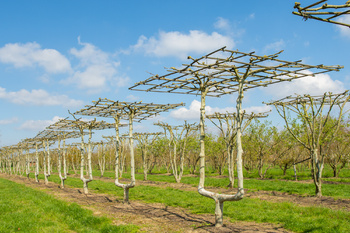
Trees to define the look
Trees which define the look of a planting location are unique in appearance; no two are the same in growing shape. We recommend that you come to our nursery yourself to select the trees that will define the look. This guarantees quality within the available budget, and the choice of variety can be reconsidered, where necessary. Because of the extensive choice in terms of range, dimensions and shape we can make adjustments in the planting plan in order to fit in with a limited budget.
Trees for cemeteries
